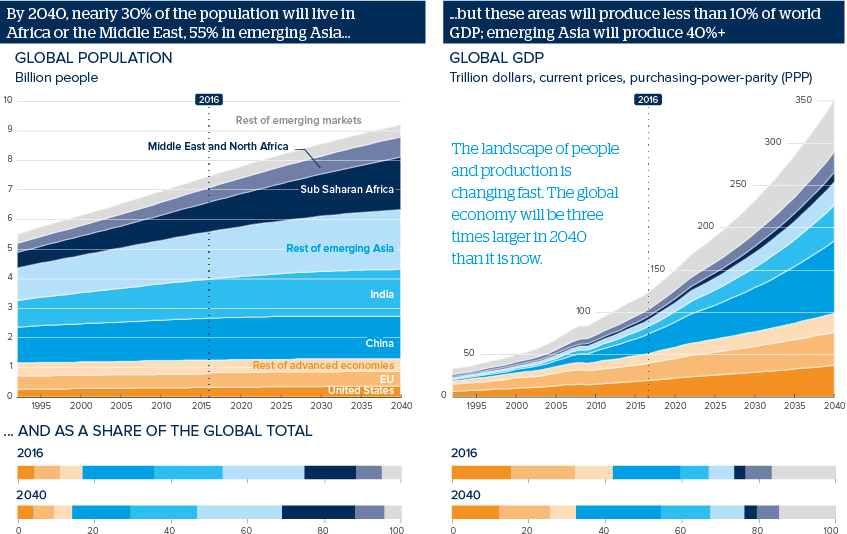Population trends pose development challenges
Just 2% of global population gain in 2016-40 will be in advanced countries; 56% will be in Africa and the Middle East
Source: UN Population Prospects, IMF World Economic Outlook Database, Oxford Analytica
Outlook
By 2040, the population of Africa and the Middle East will increase by 975 million. The rest of the world will increase by 769 million. Migration may intensify. All regions will face pressure to provide jobs, housing, infrastructure and social security.
In developed economies, technology will continue its advance, but productivity and goods trade are likely to remain weaker than before the 2008 crisis. In 1992, those economies accounted for nearly two-thirds of world GDP; that may drop to one-third by 2040.
Emerging Asia’s share of GDP has risen to 32% from 13% in 1992, thanks to the growth of China. Competition will check the pace, though it is still expected to approach 45% by 2040.
Impacts
- Pew Research Centre estimates the Muslim population will equal the number of Christians by 2060, potentially changing consumer patterns.
- Research shows the sperm count of Western men fell 59% from 1973-2011; the trend of emerging markets outpopulating the West will intensify.
- The Institute of Health Equity showed this month that UK life expectancy gains have stopped since 2010; post-crisis austerity is a reason.
- Technology and democracy give young populations a louder voice to campaign for resources; social unrest and populist voting may increase.
See also
- Africa's future will hinge on closing skills gap - Dec 28, 2018
- Prospects for European migration in 2019-23 - Dec 6, 2018
- Low interest rates may be the new normal - Jul 26, 2018
- Changing diets challenge sustainable global growth - Feb 20, 2018
- Electric vehicles surge but peak oil is decades away - Sep 22, 2017
- Climate change may hit Niger's growing population - Aug 7, 2017
- Prospects for the global economy to end-2017 - Jun 1, 2017
- More graphic analysis
